The closest supernova to Earth in five years was discovered in the Pinwheel Galaxy, M101, on 19 May by amateur astronomer Koichi Itagaki.
The Japanese supernova hunter has more than 100 supernova discoveries to his name.
He first noticed this latest event when it was mag. +14.9. It grew to mag. +13.5 just 11 hours later and by 21 May it had reached mag. +11.0, where it seems to have plateaued.
Itagaki quickly reported his find, which was then given the designation SN 2023ixf and sent out to the observing community, triggering both professional and amateur astronomers to race to their telescopes.
Located just 21 million lightyears away in the constellation of Ursa Major, the photogenic Pinwheel Galaxy is one of the most imaged deep-sky objects, meaning several astronomers were able to consult their astrophotos from the previous nights to discover they too had captured the brightening star.
Fellow amateur astronomer David Kennedy and Bronco Oostermeyer’s images of the star taken 33 and 18 hours prior to the ‘discovery’, respectively, showed that the supernova had gone from a barely visible magnitude +22.0 to magnitude +17.3 in just 15 hours.
Meanwhile, Martin Bracken’s images from 16 May showed no sign of the stellar explosion at all.
“I was lucky enough to be imaging M101 on the day it was discovered and the subsequent three days,” says Bracken, a regular contributor to the Gallery pages of BBC Sky at Night Magazine.
“The image clearly shows the progression of the supernova over those three days.”
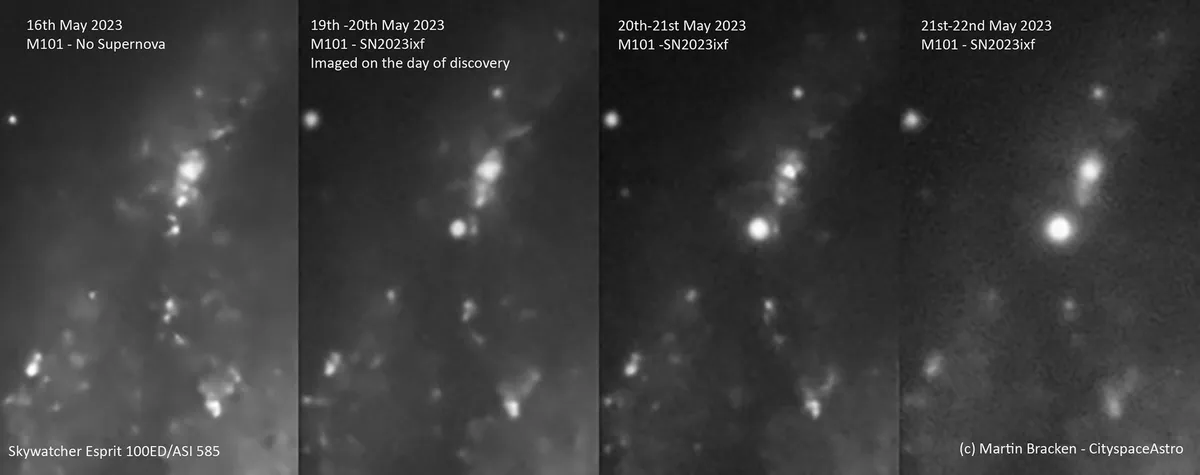
Spectral analysis indicates the explosion was a Type II supernova.
These are catastrophic explosions that occur when a massive star with a mass between eight and 40 times that of the Sun no longer has enough fuel to support itself against gravity and collapses to form a neutron star or a black hole.
The close proximity of SN 2023ixf gives a unique opportunity to study these stellar explosions.
The supernova occured in the southwest region of M101, close to prominent star-forming region NGC 5461. Previous studies of this area found it contained three clusters of young stars, which are common places to find the supergiant stars that eventually go supernova.
A 15-solar-mass red supergiant identified in Spitzer Space Telescope images of M101 taken between 2012 and 2019 could potentially be the origin of the supernova, although this star didn’t exhibit the typical fluctuations seen in a pre-explosion star.
Further analysis will be required to establish if it is actually connected to the supernova.
If the supernova follows the typical light curve of a Type II supernova then it should remain above magnitude +13.0 for several more months and at a good altitude for UK observing.
Most deep-space imaging setups should be capable of recording the supernova, although the light summer nights may make this challenging for some basic systems.
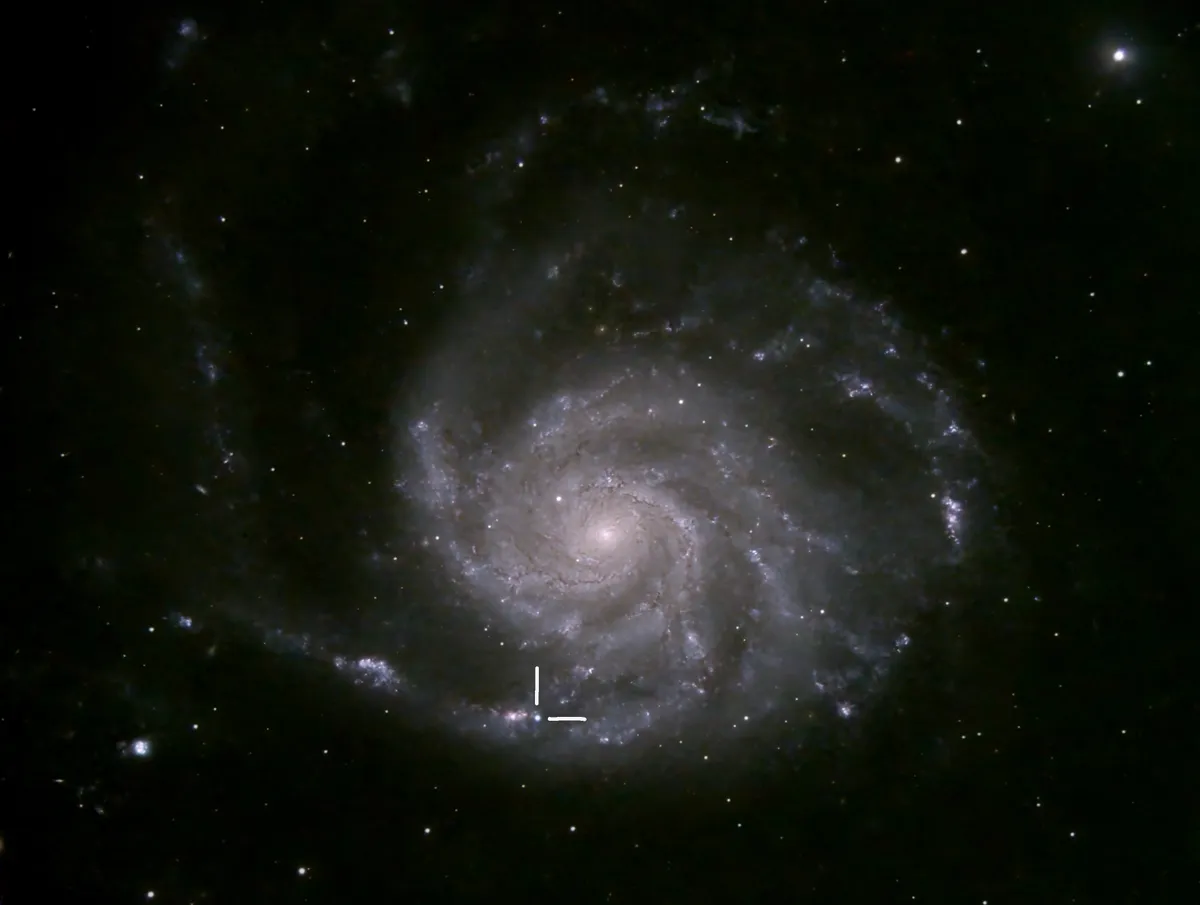
Amateur astrophotographer and retired physicist Jane Clark photographed the Pinwheel Galaxy from her home in Wales shortly after the new supernova was announced, and managed to capture the bright stellar explosion in her images (see above).
"With my telescope pointing elsewhere, I wandered into the house and found news of the supernova on social media," says Clark, who is the observatory manager at Cardiff Astronomical Society.
"I made my excuses to M64, the galaxy I had been imaging, and moved the scope across to M101, being very keen to get one of the first images, even if it wasn't very good.
"Actually, for a piece of unplanned photojournalism, I was very pleased with the result. I obtained 90 x 60s frames, and was able to use 69 of them.

"The live stack facility in SharpCap 4.0 enabled me to see that the exploding star was easily visible. I used an 11-inch Celestron SCT on a CGX mount, with an f/6.3 focal reducer.
"The camera I used to capture the supernova was a ZWO ASI2600MC. I stacked in Siril 1.0.6 and processed the image in PixInsight 1.8.9-1 with the RC extensions, then added finishing touches in Gimp.
"My date and location at the time of capture was Risca, Wales, 51.6N, 3.08W - 2023 May 21, 01:09-02:41 UT."
Our Twitter feed has included quite a few wonderful images of the supernova, too.
One user, named Astro Mike, posted this capture:
And Chris Lee of the University of Leicester managed to capture this image, which he shared on Twitter:
Since we first published this story, we've received a plethora of images of M101 showing the location of SN 2023ixf, sent in by readers and amateur astrophotographers.
Here are some of the best
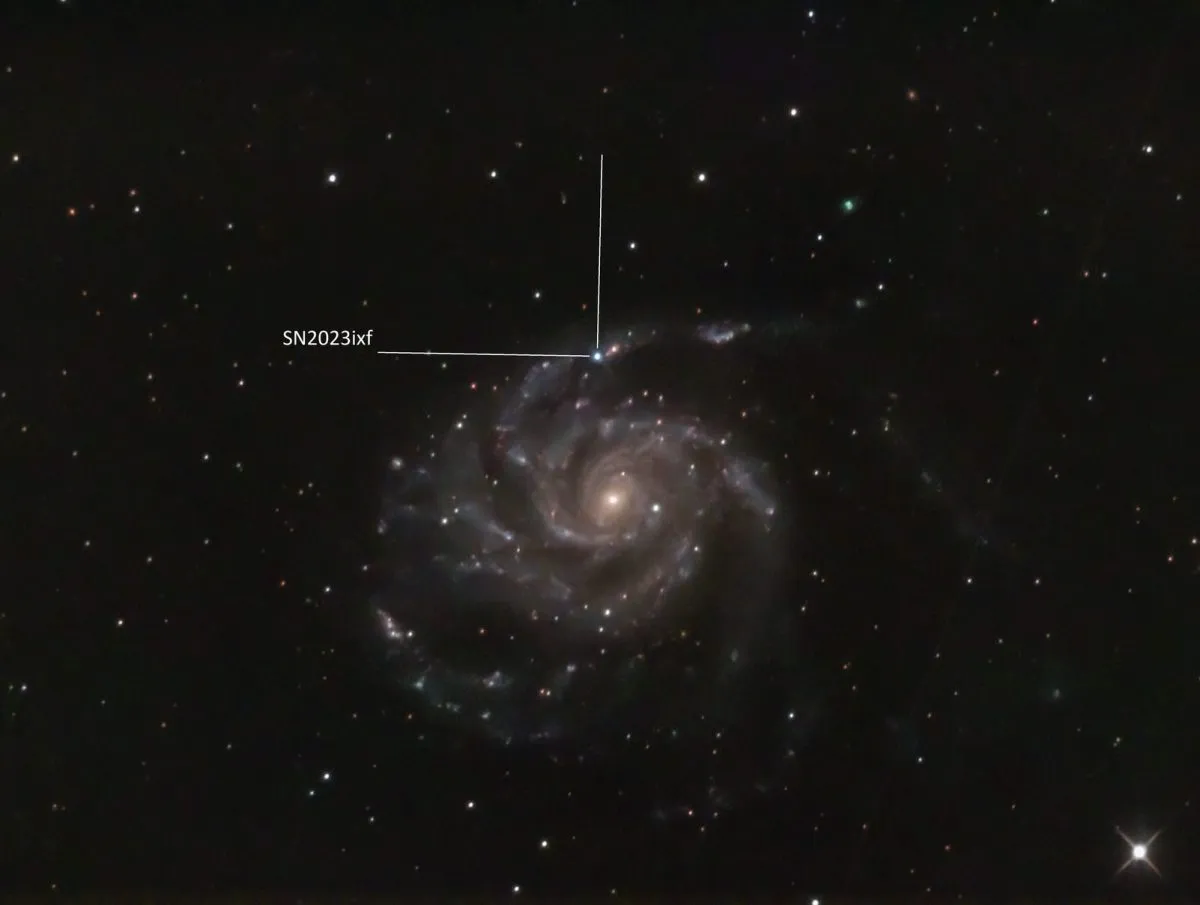
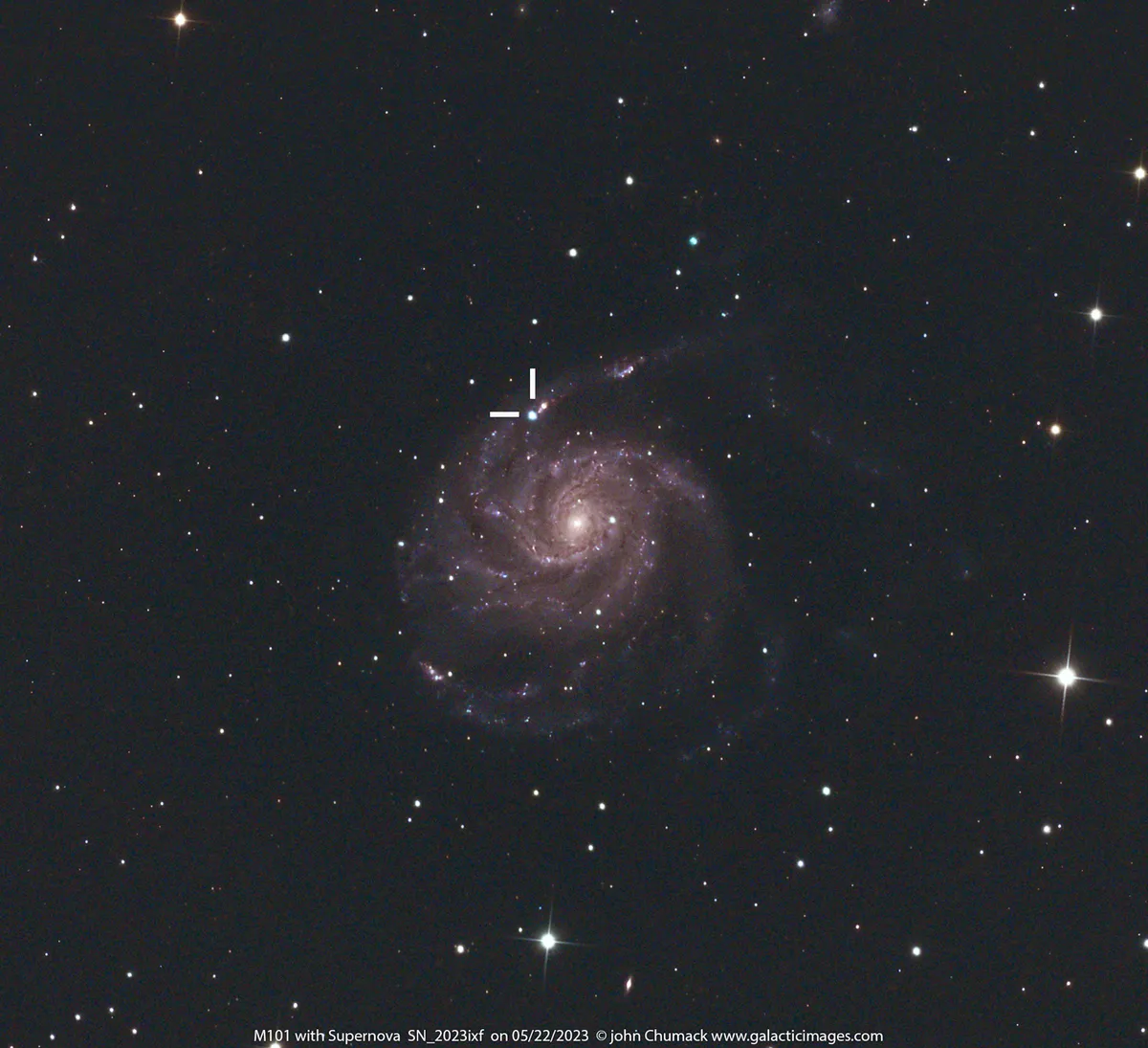
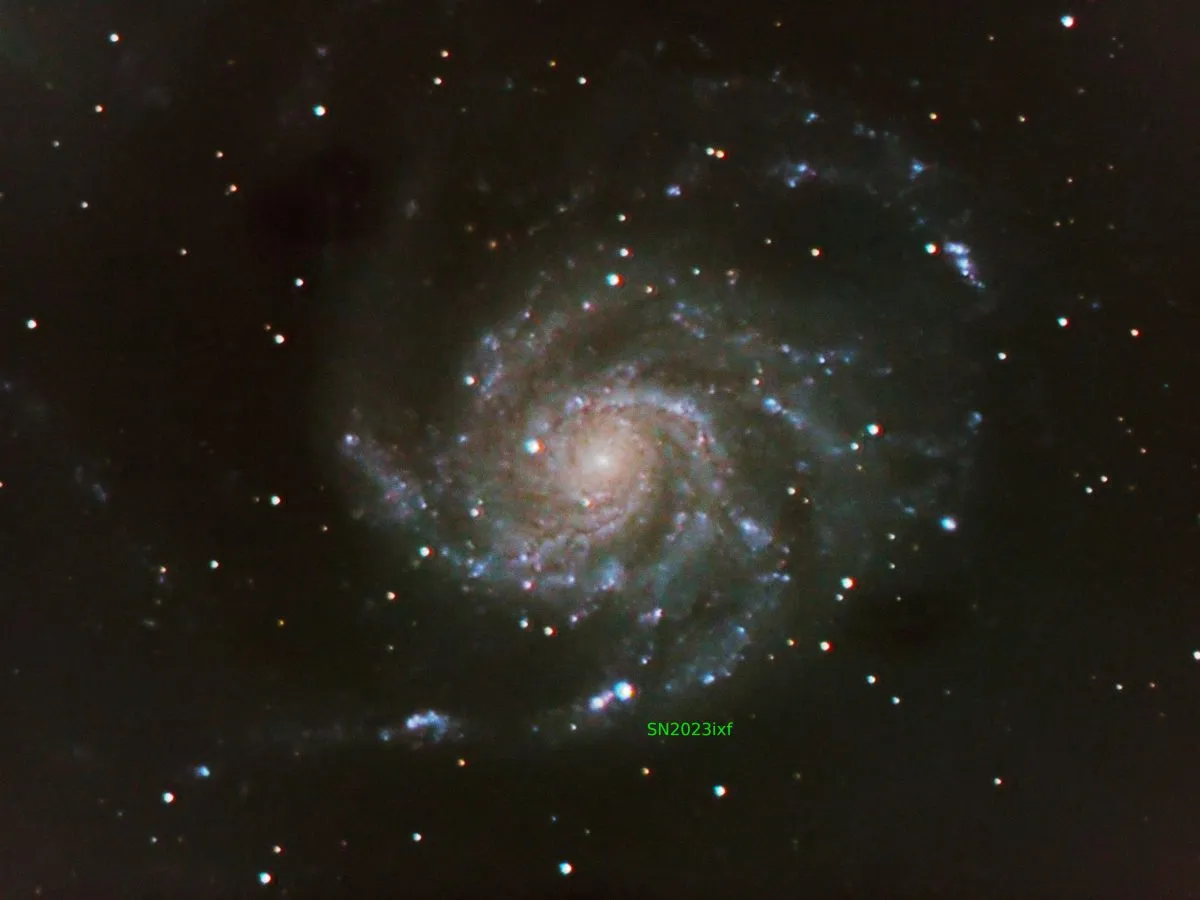
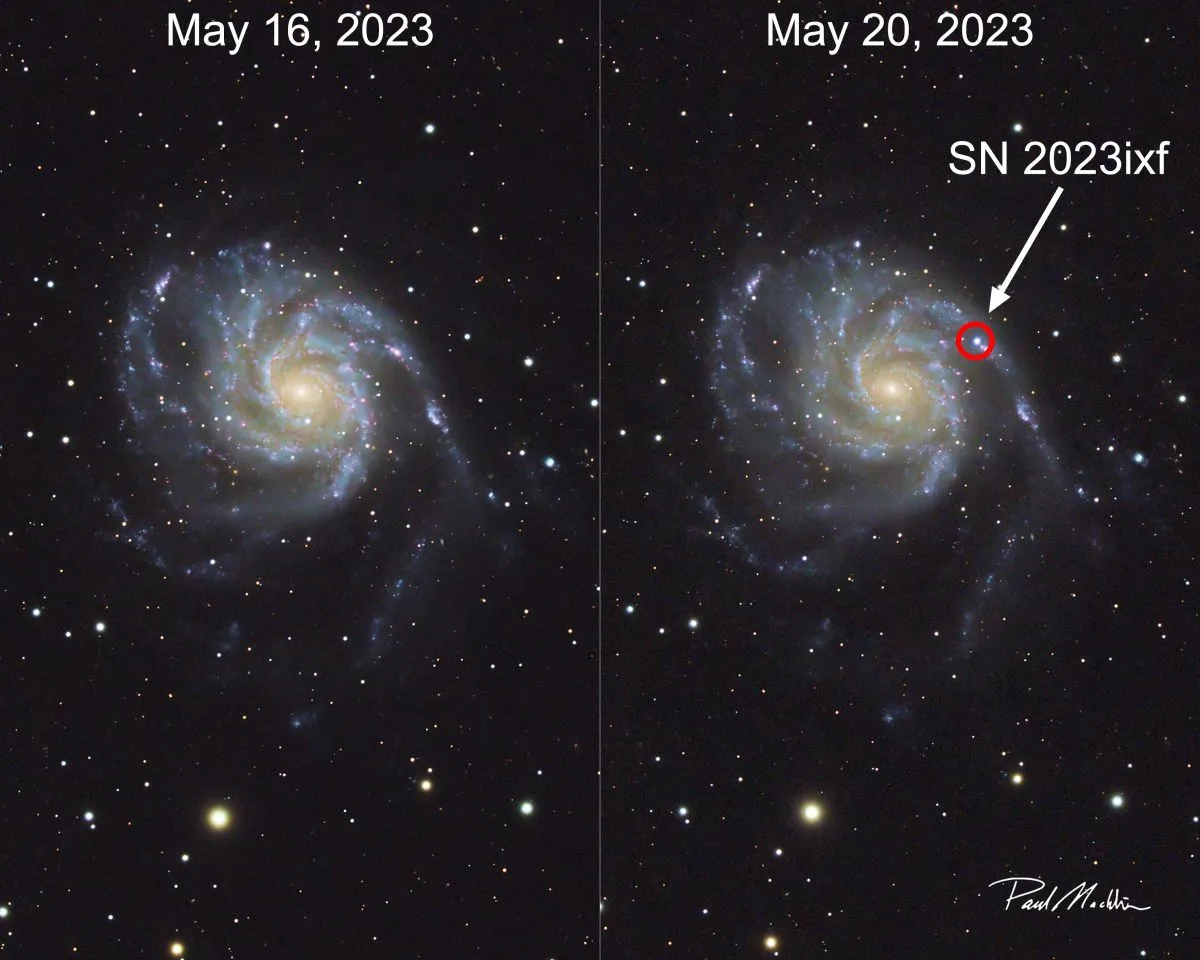
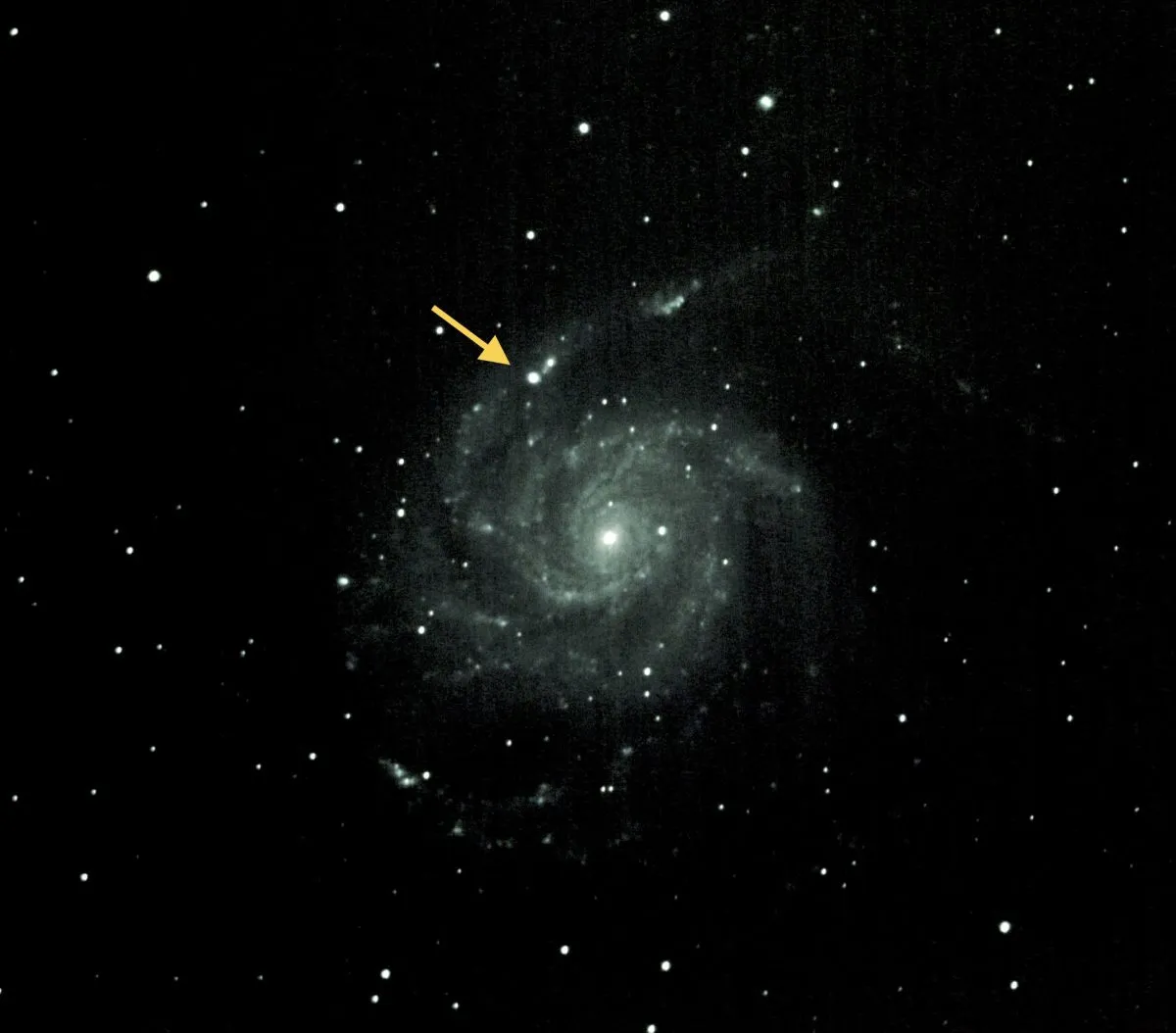
Have you managed to captured an image of the new supernova in M101? Let us know by emailing contactus@skyatnightmagazine.com.
